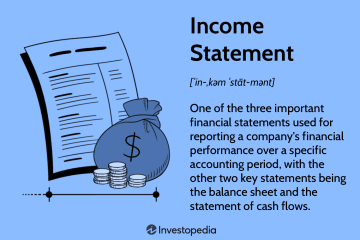To choose the right financial products to invest in, consider your financial goals, risk tolerance, and investment timeline. Take into account factors such as fees, diversification, and performance history.
Doing thorough research and seeking professional advice can help you make informed decisions based on your unique financial situation. Investing in the right financial products is crucial for building wealth and achieving your financial goals. By carefully evaluating your risk tolerance, investment horizon, and financial objectives, you can make informed decisions to grow your wealth.
Additionally, understanding the fees, performance history, and diversification of various investment options will help you choose the most suitable financial products. Seeking advice from financial professionals and staying informed about market trends will also enable you to make sound investment choices. Ultimately, by taking a well-researched and thoughtful approach, you can select the best financial products to meet your specific needs and aspirations.

Credit: m.economictimes.com
Importance Of Investing Wisely
Investing wisely is crucial when considering financial products. It’s essential to research and understand different options and their potential returns to make informed decisions. By selecting the right financial products, individuals can maximize their investments and secure their financial future.
Financial Goals And Objectives
Financial goals and objectives act as guiding principles when choosing the right financial products to invest in. These goals help you identify why you’re investing and what you hope to achieve through your investments. It could be saving for retirement, buying a house, funding your child’s education, or simply increasing your wealth. By setting clear and specific goals, you can narrow down the financial products that align with your aspirations and time horizon. Make sure to write down your financial goals in a clear and concise manner to keep yourself focused and motivated along the investment journey.Risk Tolerance Assessment
Understanding your risk tolerance is a critical step in selecting the right financial products for investment. Risk tolerance refers to your willingness and capacity to handle the ups and downs of the market. Some investors are comfortable with high-risk investments in the hopes of earning higher returns, while others prefer a more conservative approach to protect their capital. Assessing your risk tolerance involves considering factors such as your age, investment experience, financial situation, and your emotional response to market volatility. By knowing your risk tolerance, you can tailor your investment portfolio to match your comfort level and ensure a smoother investment experience. It’s essential to choose the right financial products for investment as it can significantly impact your financial future. By carefully considering your financial goals and objectives, you can align your investments with what you aim to achieve, ensuring your money is working towards your dreams. Assessing your risk tolerance is equally crucial to avoid unnecessary stress and potential losses. Now let’s explore some practical tips on how to choose the right financial products for investment:- Research and gather information about various investment options.
- Consider the potential return on investment for each product.
- Assess the risks associated with each investment option.
- Seek guidance from a financial advisor who understands your goals and risk tolerance.
- Compare and evaluate the costs and fees associated with different investment products.
- Understand the liquidity and time horizon of each investment.
- Diversify your portfolio to manage risks effectively.
- Regularly review and adjust your investment strategy as needed.

Credit: www.pvagllc.com
Understanding Different Financial Products
Explore the key factors to consider when selecting the right financial products to invest in. Understand the differences between various financial products and make well-informed decisions based on your financial goals, risk tolerance, and investment timeframe. Making the right choice can have a significant impact on your financial future.
Understanding Different Financial Products Investing in financial products can be a daunting task, especially for those who are new to the world of finance. It’s essential to have a clear understanding of the different options available before making any investment decisions. Let’s delve into the details of some of the most common financial products to help you make informed choices. Stocks and Equities When you purchase stocks, you acquire a share of ownership in a company. A company’s stock represents a claim on its assets and earnings. Stocks can offer significant returns but also come with higher risks. Each stock entitles the owner to a portion of the company’s profits and the right to vote on important company decisions at shareholder meetings. Bonds and Fixed Income Securities Bonds are debt securities issued by governments, municipalities, or corporations to raise capital. When you buy a bond, you are essentially lending money to the bond issuer in exchange for periodic interest payments and the return of the bond’s face value when it matures. Bonds are generally considered lower-risk investments compared to stocks and offer a predictable stream of income. Mutual Funds and ETFs Mutual funds are investment vehicles that pool money from multiple investors to invest in a diversified portfolio of stocks, bonds, or other assets. They are managed by professional fund managers, providing a convenient way for individual investors to access a diversified investment portfolio. Exchange-traded funds (ETFs) are similar to mutual funds but are traded on stock exchanges like individual stocks. By understanding the nature and characteristics of these financial products, investors can make well-informed decisions about where to allocate their funds. Each financial product comes with its own set of risks and potential rewards, so it’s crucial to consider factors such as investment goals, risk tolerance, and time horizon before making any investment decisions.Considerations For Choosing Financial Products
When considering financial products for investment, it is crucial to carefully weigh various factors to ensure that the chosen products align with your financial goals and needs. These considerations include analyzing your time horizon, liquidity needs, and tax implications. By thoroughly examining these elements, you can make informed decisions that will potentially lead to successful investments.
Time Horizon
The time horizon refers to the duration for which you intend to hold the investment. For long-term goals, such as retirement planning or funding your child’s education, you can consider investment options with higher potential returns that may carry greater market volatility. Short-term objectives, such as saving for a down payment on a home or an upcoming expense, may necessitate a more conservative approach with investments that offer stability but lower potential returns.
Liquidity Needs
Liquidity pertains to how easily an investment can be converted into cash without significant loss of value. For emergency funds or short-term financial obligations, prioritize investments that can be quickly liquidated without incurring penalties or substantial market risk. Long-term investments, on the other hand, may allow for less emphasis on immediate liquidity and can be allocated to less liquid but potentially higher yielding assets.
Tax Implications
Understanding the tax ramifications of different financial products is essential. Consider seeking the guidance of a tax professional or financial advisor to efficiently structure your investments with tax efficiency in mind. Certain investment vehicles may offer tax advantages, such as retirement accounts or tax-free municipal bonds, which can help optimize your portfolio’s overall tax efficiency.
Researching Investment Options
When it comes to investing your hard-earned money, one of the most important steps is researching the various investment options available to you. Conducting thorough research can help you make informed decisions and choose the right financial products that align with your goals and risk tolerance. In this article, we will explore three key aspects of researching investment options: market analysis, company financials, and expert recommendations.
Market Analysis
Market analysis involves assessing the current and potential future performance of different investment options. This helps you gauge the profitability and sustainability of the investment. To conduct effective market analysis:
- Identify the market trends and understand the factors that influence the performance of the investment options.
- Monitor the historical performance of the investment, including any fluctuations in returns.
- Analyze the market conditions and predict its future trajectory using various tools and techniques.
By conducting market analysis, you can gain insights into which investments are likely to yield favorable returns and which ones may carry higher risks.
Company Financials
Examining the financial health of companies offering investment products is crucial to determining their stability and potential for growth. Here are a few steps you can follow to assess a company’s financials:
- Analyze the company’s financial statements, including the balance sheet, income statement, and cash flow statement.
- Look for consistent revenue growth, strong profitability, and a healthy cash flow.
- Check the company’s debt levels, as excessive debt can pose risks.
- Evaluate the company’s competitive advantage and its ability to maintain market share.
Considering a company’s financials provides valuable insights into its ability to generate returns and weather economic downturns, helping you make informed investment decisions.
Expert Recommendations
Expert recommendations and insights from financial professionals can play a crucial role in guiding your investment choices. Here are a few ways to access expert recommendations:
- Consult with financial advisors or portfolio managers who can provide personalized advice based on your financial goals and risk appetite.
- Follow reputable financial news sources and publications for expert opinions and analysis.
- Join investment communities or forums where experienced investors share insights and recommendations.
Expert recommendations can supplement your own research, provide alternate perspectives, and help you identify potential investment opportunities that you may have overlooked.
Diversification Strategies
Diversification strategies play a vital role in selecting the right financial products for investing, ensuring a well-balanced portfolio. By spreading investments across different assets, industries, and regions, investors can minimize risks and potentially enhance returns. Proper consideration of individual financial goals, risk tolerance, and investment horizon is essential when making these choices.
Asset Allocation
Rebalancing
Industry Diversification
Diversification strategies play a crucial role in mitigating risks and enhancing returns when investing in financial products. To effectively diversify your investment portfolio, you need to consider Asset Allocation, Rebalancing, and Industry Diversification.
Asset Allocation
Asset allocation involves dividing your investment funds among different asset classes such as stocks, bonds, and cash. Diversifying your investments across various asset classes helps reduce the impact of market volatility.
Rebalancing
Regularly revisiting your investment portfolio to ensure the allocation aligns with your financial goals is crucial. Rebalancing involves selling overperforming assets and buying underperforming ones to maintain the desired asset allocation.
Industry Diversification
Investing in a diverse range of industries can help mitigate risks associated with sector-specific fluctuations. Industry Diversification ensures that your investments are not overly concentrated in a single sector, reducing potential losses.

Credit: www.amazon.com
Costs And Fees
When it comes to investing, understanding the costs and fees associated with different financial products is crucial. Being aware of management fees, trading costs, and expense ratios can significantly impact your overall investment returns.
management Fees
Management fees are charges imposed by investment professionals for managing your investments. Always inquire about the upfront and ongoing management fees to assess their impact on your returns.
trading Costs
Trading costs encompass the expenses incurred when buying or selling investments. Stay vigilant about transaction costs such as brokerage fees and spread costs that can eat into your profits.
expense Ratios
Expense ratios indicate the percentage of your investment that goes towards the fund’s operating expenses. Lower expense ratios are favorable as they mean more of your returns stay in your pocket.
Monitoring And Adjusting Your Portfolio
Optimizing your portfolio involves selecting suitable financial products for investment purposes. It’s crucial to regularly monitor and adjust your holdings to align with your financial goals and risk tolerance. Conduct thorough research and seek professional advice when choosing the right products to diversify your portfolio effectively.
Performance Tracking
One of the key aspects of monitoring and adjusting your portfolio is performance tracking. It is crucial to regularly evaluate how your investments are performing to ensure they align with your financial goals.
Monitoring your portfolio’s performance involves assessing the returns you’re earning on your investments. This can be done by tracking specific metrics such as the average annual return, the growth rate of individual assets, and the overall volatility of your portfolio.
Tracking performance allows you to identify which investments are generating positive returns and which may not be performing as expected. By keeping a close eye on performance, you can make informed decisions to optimize your portfolio.
Reevaluation Of Goals
Alongside monitoring your portfolio’s performance, it’s important to reevaluate your financial goals periodically.
Life circumstances and financial objectives can change over time, and it’s essential to ensure your investment strategy still aligns with these goals. By revisiting your goals regularly, you can confirm if any adjustments are necessary to keep your portfolio on track.
Evaluating your goals involves asking yourself if they remain realistic and achievable. It’s also an opportunity to determine whether your risk tolerance has changed or whether any major life events have occurred.
Regular Reviews
Conducting regular reviews of your portfolio is a vital part of maintaining a healthy investment strategy.
During these reviews, you should assess each investment in your portfolio to ensure it continues to align with your financial goals and risk tolerance. Evaluating the performance and relevance of your investments helps you identify any areas that may require adjustment or reallocation.
Regular reviews also allow you to take advantage of new investment opportunities that may arise or make more informed decisions about rebalancing your portfolio.
| Benefits of Monitoring and Adjusting Your Portfolio |
|---|
| Optimize investment returns |
| Stay on track with financial goals |
| Minimize potential losses |
| Adapt to changing market conditions |
- Regularly monitor your portfolio’s performance.
- Reevaluate your financial goals periodically.
- Conduct regular reviews of your portfolio.
- Track performance metrics such as average annual return and volatility.
- Ask yourself if your goals are still realistic and achievable.
- Evaluate each investment’s performance and relevance.
- Take advantage of new investment opportunities.
Frequently Asked Questions Of How To Choose The Right Financial Products To Invest
How Do I Choose A Financial Product?
To choose a financial product, consider your financial goals, risk tolerance, and time horizon. Compare fees, interest rates, and terms before making a decision. Conduct thorough research and seek advice from a financial advisor if needed.
How Do I Decide What Product To Invest In?
To decide which product to invest in, consider factors like market demand, profitability, and your personal interests. Conduct thorough research, analyze potential returns, and assess the competition. Look for products with a proven track record of success and consider seeking expert advice.
Trust your instincts but make informed decisions for the best investment outcome.
How Do I Choose The Right Investment Options?
To choose the right investment options, consider your goals, risk tolerance, and time horizon. Diversify your investments across different asset classes like stocks, bonds, and real estate. Research and seek professional advice to make informed decisions. Regularly review and adjust your portfolio to align with your financial objectives.
How Can I Know What Investments Would Be Best For Me?
To know the best investments for you, assess your financial goals, risk tolerance, and time horizon. Consult a financial advisor for personalized advice. Diversify your portfolio and consider factors like taxes and fees. Keep updated on market trends and continuously review your investments.
What Factors Should I Consider When Choosing Financial Products To Invest?
To choose the right financial products, consider your investment goals, risk tolerance, time horizon, and diversification needs.
Conclusion
Choosing the right financial products for investment is a crucial step towards achieving your financial goals. By considering your risk tolerance, investment objectives, and conducting thorough research, you can make informed decisions. It’s important to diversify your portfolio and seek professional advice when needed.
Remember to review your investments regularly and make adjustments as necessary. With careful planning and strategic decision-making, you can maximize your returns and build a solid financial future.


